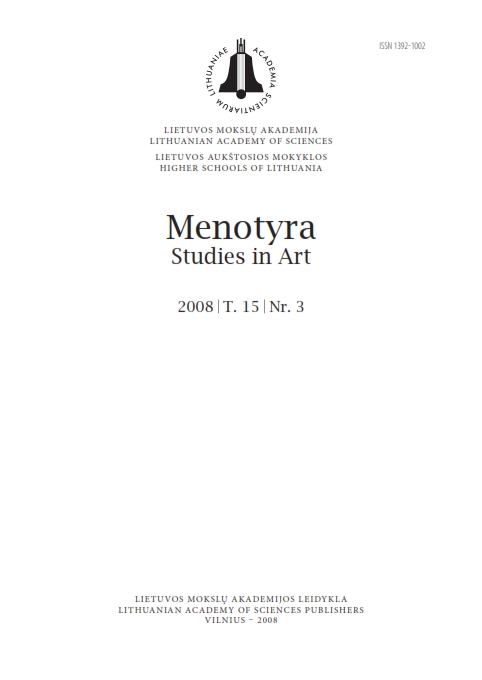Mikalinos Glemžaitės indėlis į lietuvių tautinio kostiumo kūrybą: 1930 –1960 m.
The contribution of Mikalina Glemžaitė to creating the Lithuanian national costume in 1930–1960
Author(s): Teresė JurkuvienėSubject(s): Visual Arts
Published by: Lietuvos mokslų akademijos leidykla
Summary/Abstract: The subject of the article is the work of Mikalina Glemžaitė, one of the first professional creators of the national Lithuanian costume, while designing and promoting regional costume models. The article aims at defining Glemžaitė’s position among other creators of the 1940s, revealing the peculiarity of her conception of the national costume, as well as the influence of her works’ on the further development of the national dress.Mikalina Glemžaitė have been actively participating while creating and promoting the model of “regional” national costume since the start of such process in the ’40s, un-till mid-’60s, when it started to become rapidly replaced by pastiched scenic costumes.All her life Glemžaitė was more successful as a persistent gatherer of ethnographic data. She absorbed the idea of regional costumes from A. Tamošaitis, K. Šimonis and other cultural characters of the ’40s and maintained most of their principles ever since. However, the national costume model presented by Glemžaitė is more eclectic in terms of style, also allowing and sometimes even encouraging creative inserts, not always sufficiently based on ethnographic data. There is some inconsistency in samples of the national dress, presented in her publications, attempts to integrate contradictory methods of reconstruction.Some practical advice presented in her books and pliancy to aesthetics of the epoch, watering down historic requirements established in the beginning, caught on later and was highly damaging to reconstruction accurateness of traditional dress.Glemžaitė accomplished her major works promoting the concept of regional national costume and its samples. She lectured a great number of discourses and published three publications of practical purpose. The latter were more orientated towards the poorer and less educated part of society, therefore it extended the scope of new-sample national costumes’ users significantly.Glemžaitė never succeeded in integrating her knowledge about authentic folk wear, and practical decisions regarding the design of national costumes in one smooth unit. Her last book Lietuvių tautinis kostiumas (Lithuanian national costume), published in 1955, begins to formally separate authentic folk wear from newly designed national costumes in both texts and illustrations, while the digression of the new dress forms’ from the archetypes is presented as a mere fact.
Journal: Menotyra
- Issue Year: 15/2008
- Issue No: 3
- Page Range: 66-79
- Page Count: 14
- Language: Lithuanian

